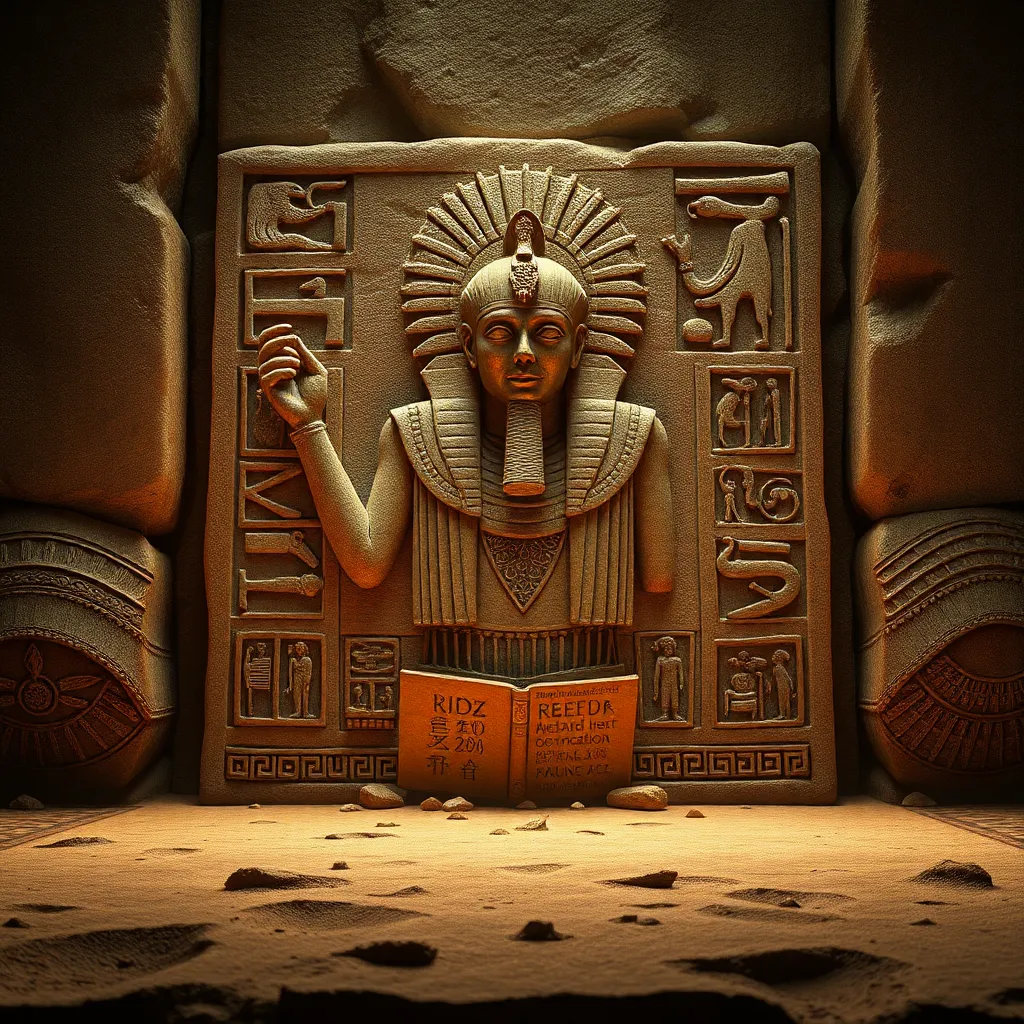The Book of the Dead: A Literary Masterpiece
I. Introduction
The Book of the Dead, known in ancient Egyptian as “The Book of Coming Forth by Day,” is a collection of spells, prayers, and incantations designed to guide the deceased through the afterlife. This sacred text serves as a critical aspect of ancient Egyptian funerary practices and is regarded as one of the most important works of literature from antiquity.
Its historical significance lies in its profound influence on Egyptian culture, beliefs about the afterlife, and the importance of the journey that the soul undertakes post-death. In this article, we will explore the origins, content, symbolism, literary style, and lasting legacy of The Book of the Dead.
II. Historical Context
The Book of the Dead emerged during the New Kingdom period of ancient Egypt (circa 1550–1070 BCE), evolving from earlier funerary texts, such as the Pyramid Texts and the Coffin Texts. It represented a democratization of funerary literature, as it became accessible to a broader range of people, not just royalty.
Central to ancient Egyptian funerary practices, The Book of the Dead was often inscribed on papyrus scrolls and placed in tombs alongside the deceased. It served to ensure safe passage through the Duat (the underworld) and to achieve a successful afterlife.
The text’s influence extended beyond its original context, inspiring later works in various cultures and contributing to the development of religious and philosophical thought in the Western world.
III. Structure and Content
The Book of the Dead is composed of over 200 spells, arranged into chapters that vary in number and content depending on the version. These spells cover a wide range of themes, including protection, guidance, and the necessary knowledge for navigating the afterlife.
- Key Themes:
- The Journey of the Soul
- The Judgment of the Dead
- The Importance of Moral Conduct
- Notable Spells:
- Spell 125: The Weighing of the Heart
- Spell 30B: The Opening of the Mouth
- Spell 1: The Chapter of the Coming Forth by Day
Each spell was intended to provide specific assistance or protection, ensuring that the deceased could overcome obstacles and achieve eternal life.
IV. Symbolism and Imagery
The Book of the Dead is rich in symbolism and imagery that conveys deep spiritual messages. Symbols such as the ankh (the key of life), the scarab beetle (rebirth), and the feather of Ma’at (truth and justice) permeate the text.
The imagery used throughout the spells serves to illustrate the journey of the soul and the challenges it faces. For instance, the depiction of the weighing of the heart against the feather of Ma’at is a powerful representation of moral judgment after death.
Through these symbolic elements, The Book of the Dead reflects the ancient Egyptians’ views on the afterlife, emphasizing the significance of living a virtuous life to ensure a favorable judgment and a place in the eternal realm.
V. Literary Techniques
The narrative style of The Book of the Dead incorporates various literary devices, such as parallelism, repetition, and metaphor, which enhance its poetic quality. These techniques create a rhythm and flow that make the text not only a guide for the deceased but also a work of art.
When compared to other ancient literary works, such as the Epic of Gilgamesh or the Iliad, The Book of the Dead stands out for its unique focus on the individual soul’s journey rather than collective heroism or battles.
The oral tradition of storytelling played a significant role in shaping the text, with many spells likely derived from spoken rituals before being committed to writing. This oral heritage contributes to the text’s evocative power and enduring appeal.
VI. Modern Interpretations
Contemporary scholars view The Book of the Dead as a crucial document for understanding ancient Egyptian religion, culture, and worldview. Its themes of morality and the afterlife continue to resonate, prompting discussions about spirituality and ethics in modern contexts.
The Book of the Dead has also found its way into popular culture, inspiring films, literature, and art. From movies that depict ancient Egypt to novels that explore its mythology, the text’s influence remains prevalent.
Additionally, some modern spiritual practices draw inspiration from the teachings found within The Book of the Dead, emphasizing the importance of the soul’s journey and the need for moral integrity.
VII. Preservation and Legacy
The preservation of The Book of the Dead has been facilitated by various archaeological discoveries, including the unearthing of ancient tombs and papyrus scrolls. Notable manuscripts are now housed in museums around the world, allowing for continued academic study and public interest.
The Book of the Dead has had a lasting influence on literature and art, inspiring countless works that reflect its themes of life, death, and the afterlife. Its legacy continues to be felt in both scholarly circles and popular culture.
VIII. Conclusion
In conclusion, The Book of the Dead stands as a literary masterpiece that encapsulates the spiritual beliefs and cultural practices of ancient Egypt. Its intricate spells, rich symbolism, and profound themes contribute to its significance as one of the most important texts from antiquity.
The text’s enduring legacy and relevance today invite further exploration and study, encouraging individuals to delve deeper into the mysteries of the afterlife and the moral complexities of human existence.




